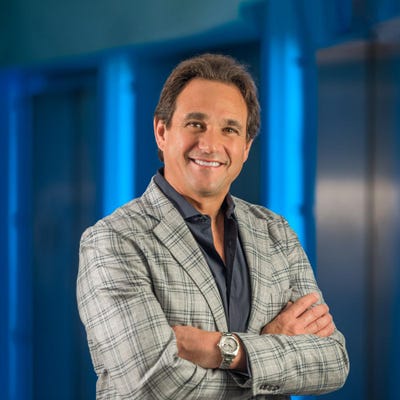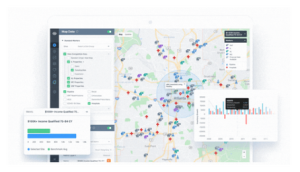America is facing a crisis of affordability for one of its most populous and vulnerable generations. Every day, about 10,000 Baby Boomers turn age 65, with all of them expected to reach this age by 2030. Life expectancies continue to rise, with the average ages of women and men now 86.7 and 83.9, respectively. Meanwhile, the average monthly price tag for living in an assisted living community is $4,051, and the average price for receiving in-home care is $4,290. The average Baby Boomer saves approximately $152,000 for retirement and spends $48,885 per year. In my view, all these figures underscore a frightening pattern considering many older Americans need help with personal care in their lifetimes.
All conditions remaining equal, these trends indicate that many older Americans will be unable to afford their healthcare needs in their 80s or 90s. To be clear, the problem doesn’t just affect Baby Boomers but our entire society and economy. Based on my experiences partnering with senior living providers, I think it calls for swift and coordinated action.
Smart technology is the closest thing to magic.
Arthur C. Clarke famously wrote, “Any sufficiently advanced technology is indistinguishable from magic.” Considering recent advancements in tech, Clarke’s declaration seems astute. Smart home systems and artificial intelligence (AI) have unlocked an ever-growing number of possibilities for assisting seniors as they age. From smart security to lighting systems, thermostats to pill dispensers, and beyond, today’s devices enable caregivers to monitor the activity of residents and proactively intervene. They also enable adult children to maintain supportive home environments for their parents from anywhere, at any time.
It’s worth considering the collective ability of smart devices to address the affordability crisis mentioned previously. At the very least, they give us a chance of helping older Americans gain access to the social determinants of health that can maximize the quality of life.
Smart devices can enable senior living providers to cut down on some of the most costly aspects of their operations, starting with labor. Through automation and efficiencies of scale, technology can enable them to optimize staffing levels and limit labor dependencies, which have long hampered the industry.
Home health aides and personal care aides in the senior living industry average a turnover rate of approximately 50%, a costly figure considering the expenses associated with recruiting, onboarding, and training new workers, not to mention the downstream impacts, including worker fatigue, burnout, and diminished performance. These costs can contribute to a higher price tag for the consumer and make affordable living an elusive value proposition for senior living organizations. Smart tech creates the opportunity to automate low-level tasks and create more meaningful and lucrative career opportunities, potentially improving retention and eliminating the vicious cycle of high turnover.
Outsmarting The Healthcare Problem
Technology can help with another costly aspect of aging: healthcare. For seniors and the U.S. healthcare system overall, much of this expense is caused by chronic conditions that can be averted through healthier lifestyle behaviors, which today’s digital health tools facilitate more effectively than ever. Prevention remains key. Seniors with a serious chronic illness can expect to pay $1,000 to $2,000 more per year for healthcare than those without one.
Still, for seniors already dealing with a chronic condition, better managing it could result in health savings and benefits. Digital health tools can also help in this regard. For instance, if people with Type 2 diabetes don’t properly manage their condition, it can lead to serious health problems. Some digital glucose meters now make it simple and easy to manage diabetes through a combination of real-time health data, reminders, and tracking, helping seniors stay on top of their health and avoid costly healthcare encounters or prolonged issues.
Technology also offers benefits for preventing acute problems as well. Motion sensing technology, wearables and even hearing aids can detect when seniors are at heightened risk for falls, which constitute the leading cause of injury and injury death in the U.S. Every year falls send 3 million seniors to the emergency room for expensive treatment. By detecting the problem, it affords caregivers and others a chance to save seniors from serious injury, surgery, and/or disability.
Embracing ‘Smart’ As The Future
This past year saw a substantial uptick in technology investment in the senior living industry. Nearly 80% of senior living providers reported an increase in technology investment to address the pandemic, and 87% expect to increase their technology spending this year. While this helps, I believe providers must substantially allocate more funds to adopting the smart systems that address the whole health of older Americans, including physiological, social, mental, and emotional.
For example, my company invests in partners and senior living communities that see smart health and wellness tech as a priority. They support and address the basic needs of seniors to maximize their quality of life through security and safety, communication and socialization, learning, and health and wellness.
Senior living organizations can begin building smart communities by following the timeless formula for efficient and effective technology adoption — starting at the top of the organization. Leaders should make the transition to smart tech a key organizational priority, which includes establishing the vision and purpose of the effort and communicating both effectively across every level of the organization.
Subsequently, leaders should establish a cross-functional team to own and lead the initiative. This group should combine technical expertise in smart tech with a deep understanding of supporting the whole-health needs of seniors. If the organization lacks knowledge and skills to support the former, it should recruit and acquire talent accordingly.
Beyond the industry, technology companies should continue to step up and create systems that are interoperable and open source, rather than creating disparate systems in hopes of maintaining a competitive advantage.
Smart tech is not just a smart choice, but arguably the only choice for solving the affordability crisis. And I’m not talking about radical change — instead, adopting the available technology sold every day in retail stores throughout the country.
If technology is the closest thing to magic, why wouldn’t we embrace it — our answer to one of the greatest needs and challenges of our lifetime?

Founder and CEO of ERG Enterprises. Nationally recognized thought leader on entrepreneurship, investing, and leadership. Read Dr. Eric George’s full executive profile






